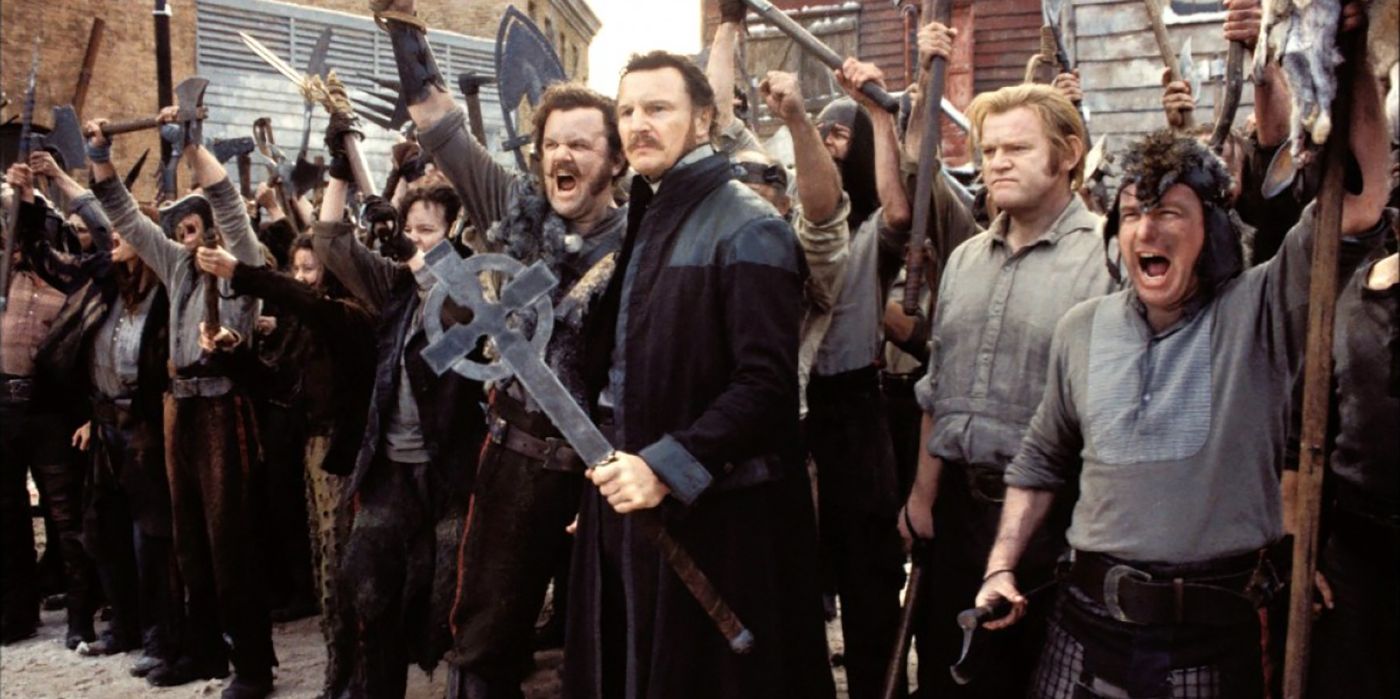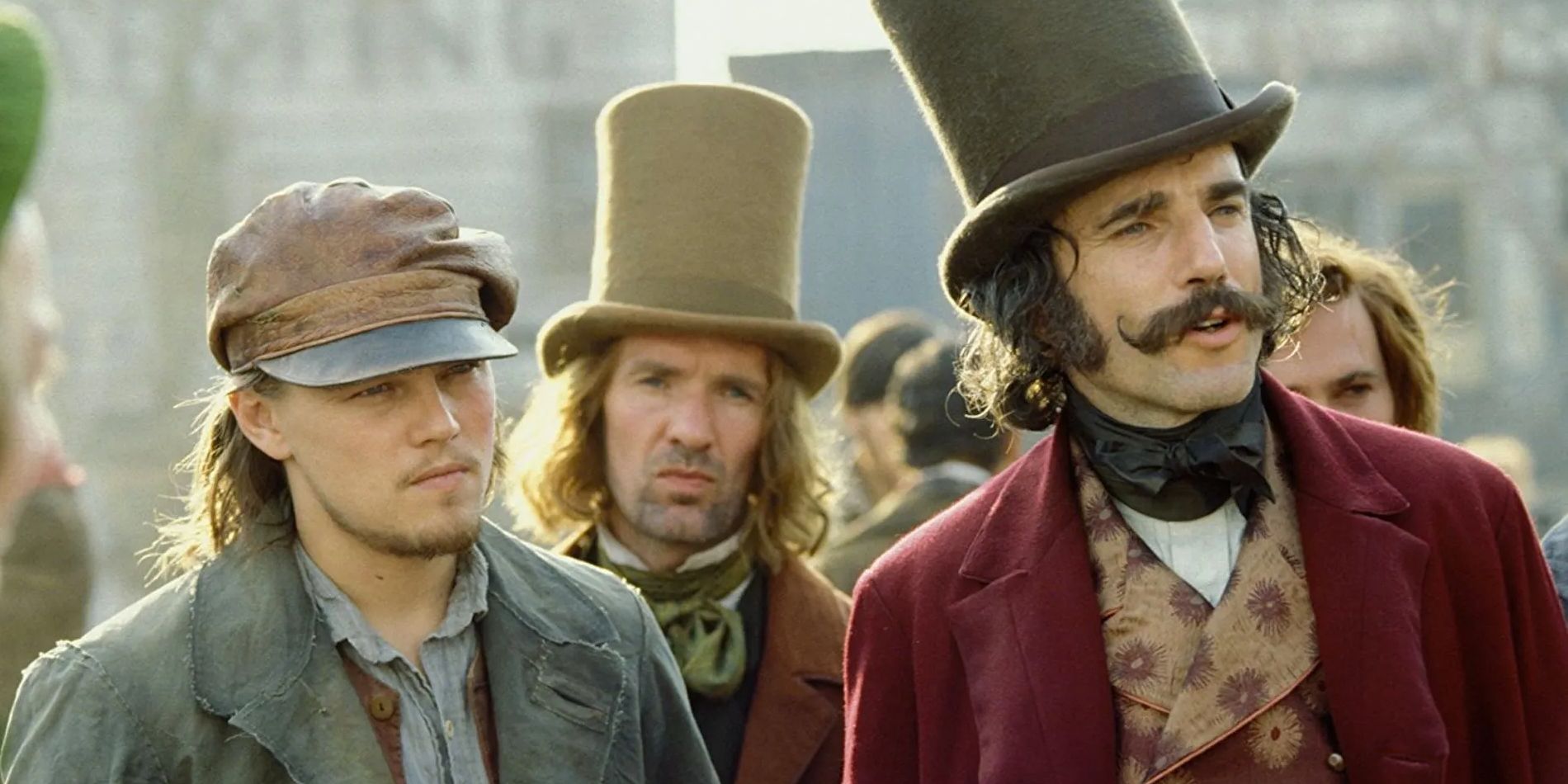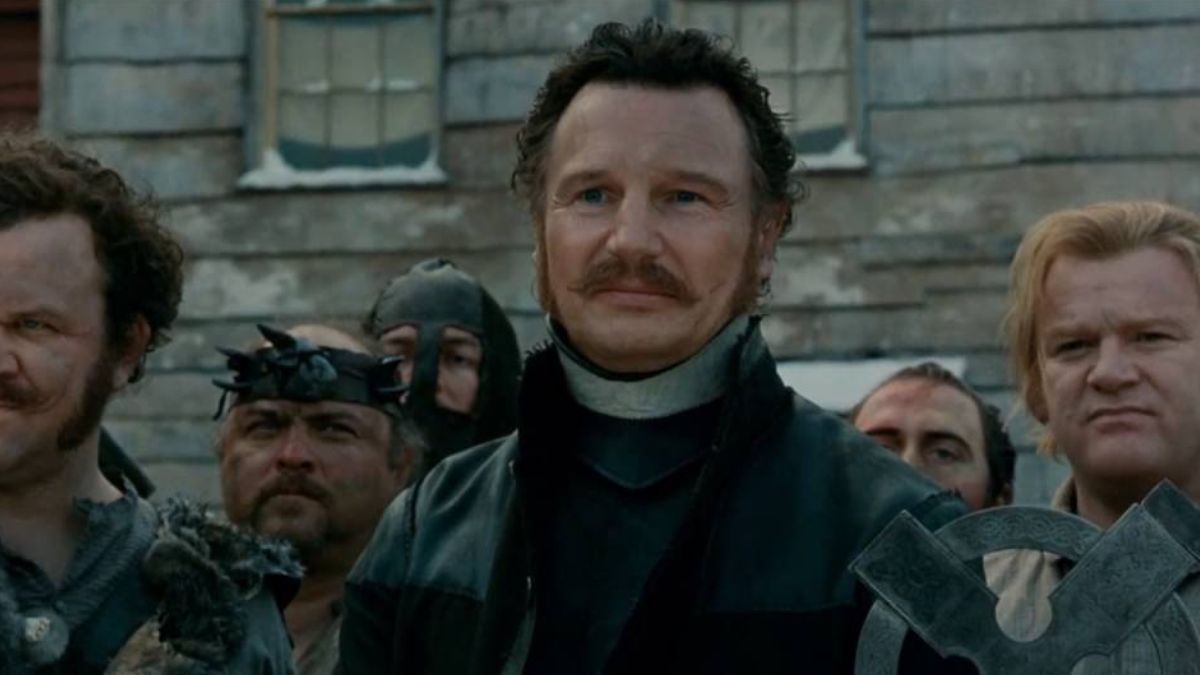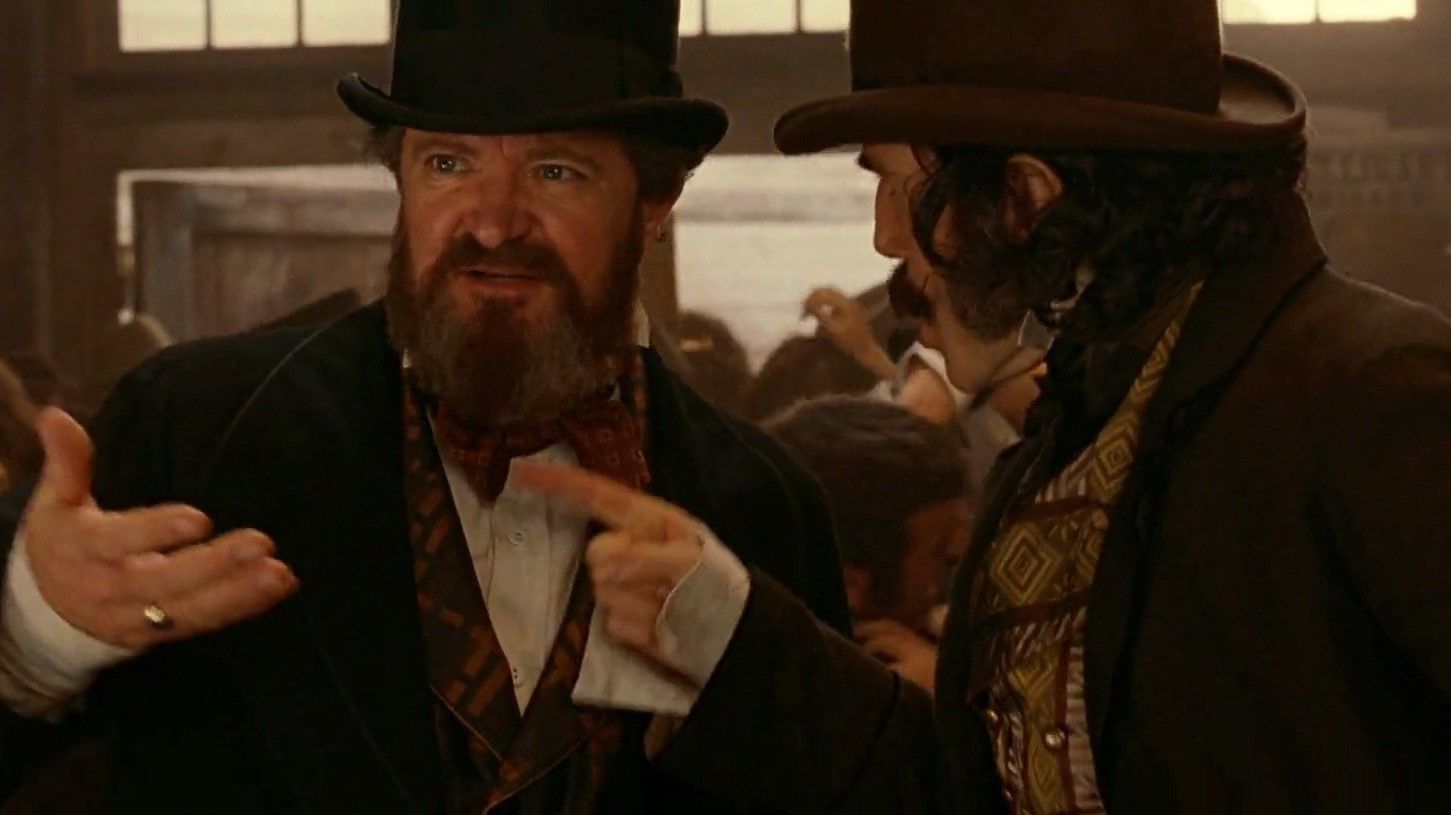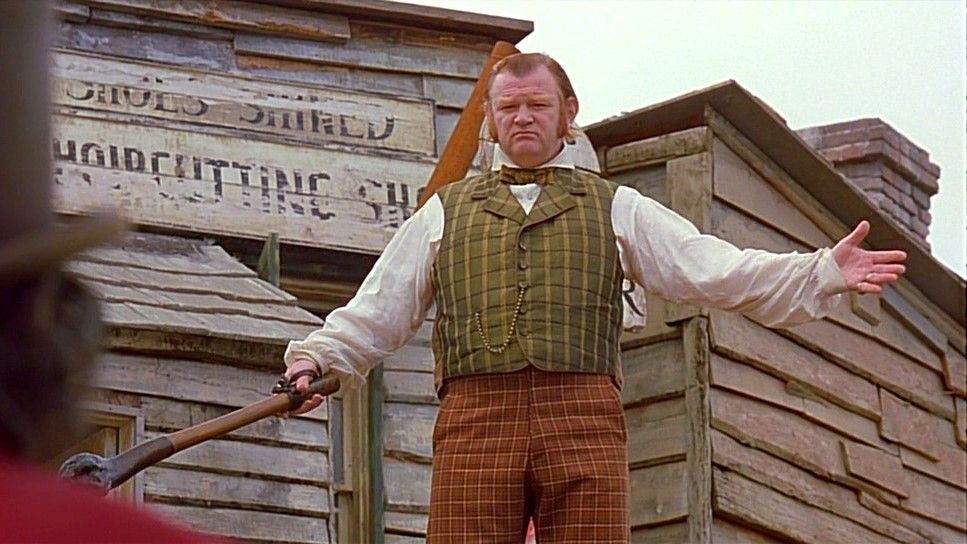After 20 years in development, Martin Scorsese finally got the chance to direct his passion project, Gangs of New York, which was first released in 2002. This historical epic, based on the novel of the same name by Herbert Ashbury, tracks Amsterdam Vallon (Leonardo DiCaprio) and his plot for vengeance against his father's killer, Bill "The Butcher" Cutting (Daniel Day-Lewis) in New York City's Five Points area in 1862. Despite the potential for a gripping story, the film secretly works best when the main characters previously described and the main plot attached with them are offscreen. This is an unfortunate twist for a Scorsese film, as the director is known for creating layered, three-dimensional, and iconic lead characters, such as Henry Hill, Travis Bickle, Jake LaMotta, and Rupert Pupkin. Amsterdam and Bill the Butcher, while well acted, distract from the main attractions from the film's side characters, who, as a whole, highlight the strengths of Gangs of New York.
Based on the wide scope of the film, a well-rounded and expansive supporting cast would be most suitable for Gangs of New York. The film does succeed with this element, as many characters fill in the corners of the lavish recreation of 1860s New York City. Even the extras feature enough attention to detail to create an immersive world. The impressive production design by longtime Scorsese collaborator Dante Ferrertti shows off the vast environment, ranging from the greedy politicians to lower class laborers in the slums.
During an exposition scene, after Amsterdam arrives to New York, he is taken on a tour of the Five Points and the gangs that reside there by an old acquaintance, Johnny Sirocco (Henry Thomas). This montage-like presentation of how the gangs make ends meet is captivating, and it lends itself to wishing that the whole movie could just be restricted to placing a camera in the middle of the Five Points and capturing this world, documentary-style. It is when Amsterdam has his first interaction with Jenny Everdeane (Cameron Diaz) where the film foreshadows the ultimate flaw of itself. The performances of DiCaprio and Diaz, whose poor casting of the latter particularly sticks out, stiffen as a result of being stricken to a toothless romance storyline. It is ironic that Gangs of New York was meant to be a major step for DiCaprio in the process of shaking off his heartthrob image created from Titanic, and yet he manages to get stuck back in the familiar beats of a romance novel while a more hard-edged movie goes on without him.
Priest Vallon's Paternal Spirit
A side character that had the ability to steal the film, even more so than a character played by Daniel Day-Lewis, is Amsterdam's father, Priest Vallon (Liam Neeson), who is killed by The Butcher in the spellbinding opening scene of the film, thus setting up Amsterdam's story arc. Priest carries himself with the usual stalwart energy often present in performances from Neeson, who leads his gang of Irish Immigrants in defeat against The Butcher's gang of Protestant American Natives. While it is used as the backdrop for this turf war, the dichotomy of allegiance between ethnic blood and geographic residence would have been a great and fitting storyline in Gangs of New York. This conflict, serving as the overarching theme of the relationship between Priest and Amsterdam, is a familiar object of fascination of Scorsese and complementary to the strengths of the film. There is an operatic quality to the evolution of the family bloodline from father to son that would tie into the film's depiction of the formulation of the country at the dawn of the Civil War.
Boss Tweed's Corruption of Politics
Gangs of New York is a murky portrayal of America, showing that the foundations of the country today were shaped through violence and corruption. The kind of nobility surrounding mid-19th century America one would read in a history textbook is not found in this film. The character that is perhaps most emblematic of its thesis is William "Boss" Tweed (Jim Broadbent), the crooked politician of Tammany Hall. He is shown to be clearly in the pocket of The Butcher for all of his deeds. He is a charismatic figure that used his charm to get to the top, only to have it be upended by the brute force of The Butcher, who not only controlled all the organized gangs of New York but the entire city as well. Tweed emphasizes another internal conflict of Amsterdam, as he reckons with the bidding that he does for a corrupt politician, even if The Butcher, who has taken Amsterdam under his wing of his crime syndicate, does run the show behind the scenes. In his mind, the appearance of serving the duties of a figure like Tweed is a disgrace to the Vallon name and the legacy of his late father.
The Downfall of Justice in New York
While the story and cast of characters of Gangs of New York are concerned with power and allegiance to one's party, Walter "Monk" McGinn (Brendan Gleeson), is a character that acts as a neutral outsider. He confronts Amsterdam that he needs to be above the bloodshed of The Butcher's enterprise, and bluntly tells him that he is performing a grave dishonor to his father. While McGinn is Irish, he proclaims that all the fighting and turf warfare is giving the Irish a bad reputation, and is lamenting over the fact that the exact kind of violence still follows Irish people over 1,000 years later and in a new geographic location.
McGinn is representative of Scorsese's idea of crime as a bloodline that will get passed on for generations to come. Through the context of his filmography, the crime and bloodshed of this New York will pass on to the New York seen in Goodfellas, and that will pass on to even the corporate felonies in the New York seen in The Wolf of Wall Street. McGinn eventually decides to make changes to the city after all when he runs for sheriff. He wins the vote after Amsterdam does favors for Tweed, but a humiliated Butcher murders McGinn, as his own candidate was defeated in the election. The character of McGinn demythologizes the history of democracy that the country was founded upon. It is a staple of Scorsese's cinematic language: crime always wins.
It is not as though that the main characters of Gangs of New York are detrimental towards a favorable viewing experience. The unfortunate reality is that there is a more engaging text around the core of the film. It's been documented that disgraced former Miramax producer Harvey Weinstein meddled with the creative process of the film, causing Scorsese so much frustration that he "threw a desk upside down...and ran out of the room" during one meeting between the two. Certain elements of the film's narrative glaringly stick out, like the romance subplot, from the greater picture of what drew Scorsese to this project for 20 years. While the main characters of Gangs of New York are confined to a traditional story of revenge and romance, the supporting players deeply recontextualize America's history with crime and politics.

